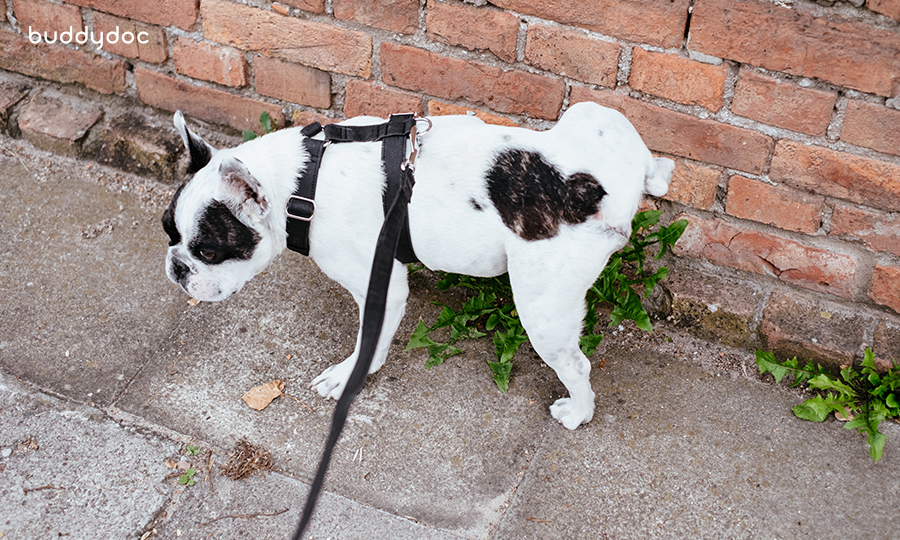DISEASES
UTI in Dogs - Symptoms and Causes for Urinary Tract Infections in Dogs
페이지 정보
본문


Overview
UTI, a urinary tract infection, is a disease that commonly occurs in dogs, and it refers to an infection of the urinary tract primarily caused by bacteria. These infections can be divided into upper and lower urinary tract infections, with lower urinary tract infections being more prevalent and affecting the bladder, urethra, and prostate in male dogs. Upper UTIs can affect the ureters and kidneys.
Dogs that are affected by a urinary tract infection often display symptoms such as frequent urination, accompanied by whining and pain during urination. In cases where the infection occurs in the bladder, it can potentially spread to both the urethra and kidneys. Additionally, blood may be present in the urine. Behavioral abnormalities may also be observed, including urinating on the floor and frequent licking of the genital area.
Dogs with underlying diseases that make them more susceptible to infections may experience frequent recurrences. A urinary tract infection is considered recurrent and chronic if a dog has experienced 2 or more infections within 6 months or 3 or more infections in a single year.
What causes UTIs in dogs?
The dog's genitalia serves as both the terminus of the lower urinary tract and a point of direct contact with the external environment, rendering it constantly susceptible to external bacteria. Within a dog's genitals, there exists a population of bacteria that is typically found on the skin and mucous membranes. Consequently, when a dog licks their genital area, it can expose germs and bacteria from its mouth as well. This inadvertent transfer of bacteria from the dog's genitals to the bladder via the urethra is what leads to a urinary tract infection.
Urinary tract infections, in general, occur due to an abnormal increase of bacteria when irregularities manifest within the normal flora present on a dog's skin and mucous membranes. While the most frequent culprit is Escherichia coli (E. coli), other types of fungi, viruses, and bacteria can also cause an infection.
A healthy bladder can defend itself against germs that are responsible for causing infections. However, if this defense mechanism fails due to certain factors like an underlying disease, the germs can penetrate the bladder wall, resulting in inflammation and pain.
Underlying conditions that may predispose your dog to urinary tract infections include:
- Chronic renal syndrome
- Bladder stones
- Congenital diseases such as vulvar malformation or ectopic ureter
- Tumors or benign polyps of the urinary tract
- Diabetes mellitus or Cushing’s disease
- Immune suppression due to immunosuppressive drugs
Clinical symptoms of UTI in dogs

Clinical symptoms of urinary tract infections in dogs may be noted by inflammation and signs of pain and abnormal urine output.thin and light, clinical symptoms may not be apparent. Generally, when the eyelashes irritate the eye and cause inflammation, the following symptoms may occur:
Common clinical symptoms of urinary tract infection include:
- Bloody or cloudy urine
- Reduced urine output due to straining or whimpering during urination
- Frequent house-soiling accidents despite receiving proper house training
- Frequent licking of the vulva
- Foul-smelling urine
- Increased thirst and amount of urine produced
If the urinary tract infection is severe and the infection has progressed to the kidneys, systemic symptoms such as lethargy, loss of appetite, fever, and vomiting may occur.
Risk factors of UTI in dogs
Urinary tract infections are frequently the result of opportunistic infections triggered by abnormal physical conditions or environments. The likelihood of infection can be influenced by various abnormalities in physical conditions.
Male dogs possess a relatively longer urinary tract compared to their female counterparts. For an infection to occur, bacteria must travel from the urethra to the bladder. Due to the shorter distance in females, they are comparatively more susceptible to urinary tract infections.
Furthermore, bladder stones serve as an underlying condition that can contribute to urinary tract infections in dogs. Dogs with bladder stones have a higher predisposition to developing urinary tract infections.
Breeds prone to bladder stones include Shih Tzus, Bichon Frises, Yorkshire Terriers, Dalmatians, Pugs, French Bulldogs, Miniature Schnauzers, Schnauzers, and Toy Poodles.
Any home treatments for UTI in dogs?
Feeding your dog a prescription diet at home may help if the infection is caused by urinary stones. The likelihood of stones occurring can be influenced by the acidity of the urine, which a prescription home diet can assist in lowering. Moreover, incorporating probiotics can aid in maintaining the natural flora of the skin and mucous membranes.
Diagnosing UTI in dogs
If a urinary tract infection is suspected, the veterinarian will first ask you about your dog's health.
Your veterinarian may ask you questions such as:
- How often does your pet urinate? When did you notice your pet’s change in urination?
- Does your pet show any signs of pain or difficulty when urinating?
- Does your pet’s urine smell bad and is there any change in the color of their urine?
- Check for any history of urinary tract infections and bladder stones
- Check what type of medications your dog had or is currently on
- Have there been any recent changes in their diet?
According to the answers provided, your veterinarian will proceed to check your pet’s condition through the following examinations.
- Check the genital area for signs of inflammation such as redness and discharge.
- Palpate the abdomen to check for discomfort or pain.
- Check for enlargement of the lymph nodes in the groin and lower abdomen.
- Check the condition of the hair around the pubic area.
- Conduct basic physical examinations such as body temperature, heart rate, and respiratory rate.
If a urinary tract infection is suspected, a urinalysis is performed first. The most effective method is to collect urine directly through cystocentesis. It is the most sterile method of collecting urine that eliminates the possibility of receiving a contaminated sample for urinalysis.
The urine collected can measure the following levels to determine the overall severity of inflammation or infection:
- Acidity (pH)
- Urine specific gravity
- Protein
- White blood cells and red blood cell
- Glucose
- Ketone
In the presence of urinary tract infections, it is common for white blood cell, red blood cell, and protein levels to typically increase, while the specific gravity of urine tends to decrease.
If a bacterial urinary tract infection is strongly suspected based on a urinalysis, the next step involves performing a bacterial culture and an antibiotic susceptibility evaluation to determine the appropriate antibiotic to prescribe. Bacterial culture involves culturing bacteria by introducing urine obtained through bladder puncture into a specialized medium. Normally, the bladder is sterile, so the presence of bacteria in the cultured medium for one to three days confirms the diagnosis of a urinary tract infection. Once the type of causative bacteria is identified through culture, an antibiotic that is effective against it is selected using an antibiotic susceptibility test.
In cases of acute urinary tract infection, broad-spectrum antibiotics can be prescribed initially while waiting for the test results, since bacterial culture and antibiotic susceptibility tests typically take several days. Once the test results are confirmed, treatment with the specific non-resistant antibiotic is administered accordingly.
In the case of chronic UTIs, a diagnosis of the underlying cause of the urinary tract infection is required.
- A blood test is performed to check whether there is a decrease in renal function, such as Cushing's disease or diabetes.
- Abdominal X-rays to check for stones in the bladder.
- Abdominal ultrasound checks for thickening of the bladder wall, stones in the bladder, kidneys, or urethra, morphological changes in the kidneys, and polyps or tumors in the bladder.
- The condition of the urethra and bladder is directly checked through a cystoscopy under general anesthesia. If a mass is present, a biopsy can be performed.
Treatment for UTI in dogs
In general, urinary tract infections are typically treated with suitable antibiotics based on the results of bacterial culture and antibiotic susceptibility testing. During the waiting period for the culture results, broad-spectrum antibiotics like penicillin or fluoroquinolone may be administered. If these prove ineffective, alternative antibiotics from a more sensitive class can be prescribed. Dogs with urinary tract infections often experience pain and discomfort, so anti-inflammatory drugs and pain relievers may also be prescribed along with antibiotics.
It is worth noting that bacteria can be detected in a urinalysis even in the absence of a pathological condition, and antibiotic treatment may not be necessary if there are no clinical symptoms of a urinary tract infection. It is important to avoid excessive use of antibiotics as it can contribute to the development of antibiotic resistance.
Under appropriate treatment, urinary tract infections typically show improvement within 24 to 72 hours after the initial antibiotic treatment and resolve completely within 2 weeks. If symptoms persist even after the recommended time has passed, it is advisable to revisit the hospital for further consultation as the initially prescribed antibiotic may not be suitable for your pet’s condition. For dogs with chronic UTIs, it is recommended to undergo urine tests during treatment to monitor changes in bacterial levels and determine the effectiveness of the antibiotic treatment.
Prevention for UTIs in dogs

Chronic recurrent urinary tract infections are preventable to a degree by correcting the underlying cause.
-
Insulin treatment and diet management
-
Kidney disease
Prescribed diet management, blood pressure management, and fluid treatment
-
Abnormal vulvar conformation
Surgical correction and frequent genitalia cleaning
-
Urinary crystals
Increased water intake and a prescription diet to help prevent stones from developing
-
Bladder stones
Surgical correction through cystotomy and a prescription diet
-
Urinary tract masses
Surgical removal
Additionally, probiotics may help maintain normal flora in dogs suffering from chronic UTIs.
Find out more about your dog’s symptoms and diseases on the Buddydoc app!

The Buddydoc library is filled with everything you’d want to know about each symptom and disease your pet may experience. If you would like to find out more about the causes, signs, treatments, preventions, and more for your dog’s disease. Try out the Buddydoc app and search for your pet’s symptoms or diseases in the Buddydoc library.













